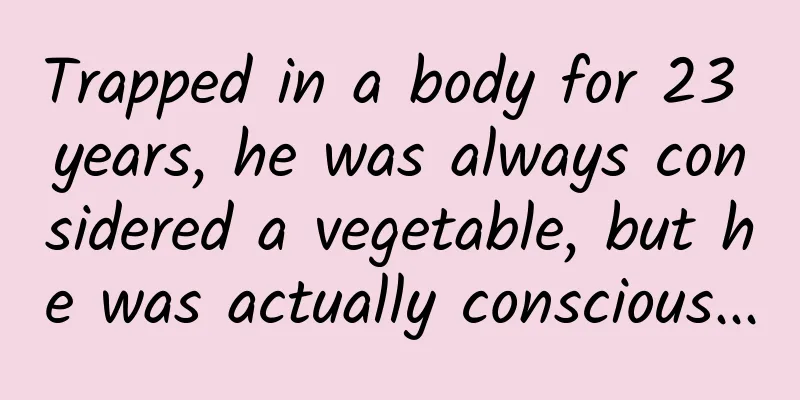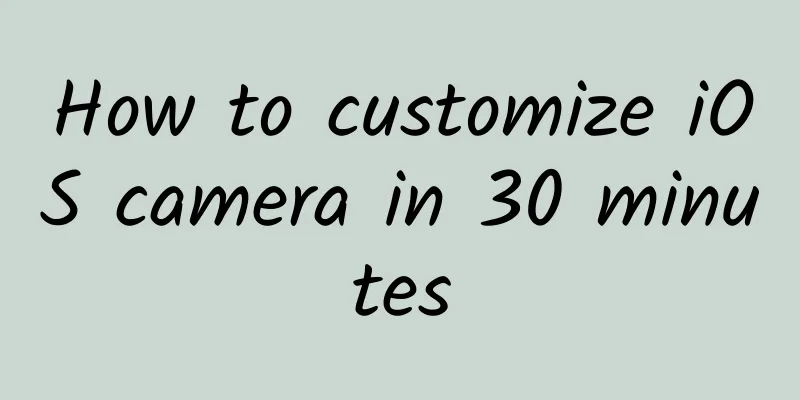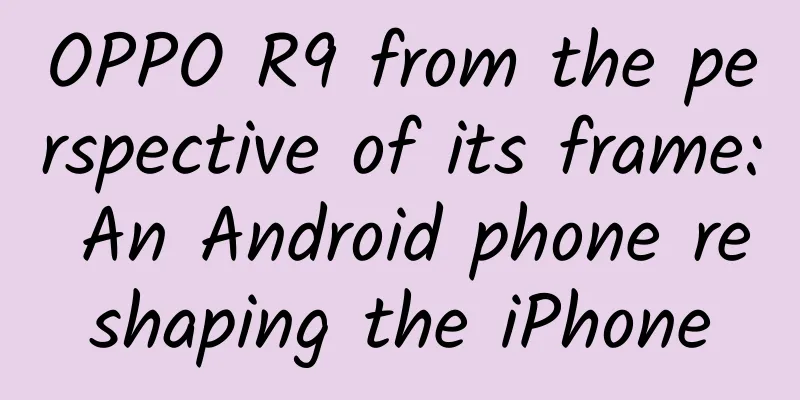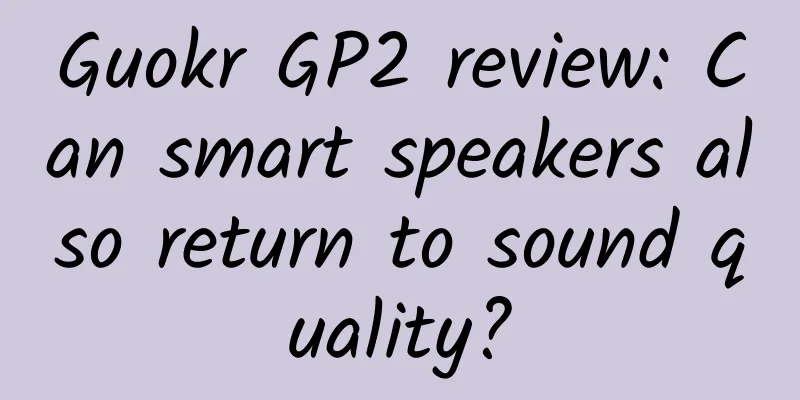Trapped in a body for 23 years, he was always considered a vegetable, but he was actually conscious...

|
It’s hard to imagine what this experience is like. Imagine this scenario: If one day you suddenly encounter a car accident, fortunately you save your life and wake up in a hospital bed soon after. But at this time you find that you can't move your body at all, you can't speak, and you can't even control the movement of your eyes. Then the doctor comes over to you to check if you are awake. He asks you, "Can you hear me?" You can hear me, but you can't answer. He asks you to move your fingers or toes, but you can't. He asks you to look where his finger is pointing, but you can't do it either. After a series of examinations, the doctor sighed, called your family members, and announced to them that you have entered a vegetative state, without consciousness or feeling. You want to refute the doctor, telling him that you are awake, but you can't make a sound; you try your best to move any muscle in your body, but it's no use. Copyright images in the gallery. Reprinting and using them may lead to copyright disputes. So, you're trapped in your own body, still conscious but no one knows it - everyone thinks you're just a vegetable. People trapped in the body Fortunately, this is just your imagination, otherwise it would be too painful. But in fact, there are many people in the world who are really experiencing this extremely horrible life. After some people experience severe brain damage - it may be physical trauma caused by a car accident, or brain damage caused by epilepsy, stroke, etc. - they can no longer respond to external commands and information. Usually, doctors will think that these patients have lost consciousness, so they often diagnose them as coma or vegetative state (the main difference between the two is that patients in vegetative state can open their eyes and have transitions between sleep and wakefulness, but are still unconscious). But what if these patients are actually awake, but simply can’t control their bodies to respond? In the last century, many doctors have raised questions about this, because there are many clues that some patients who are considered to be in a coma may still be able to perceive the outside world. For example, some patients will experience changes in heart rate, respiratory rate and intracranial pressure when stimulated by external sounds or language. In 1988, several medical experts published an article titled "Talking to Comatose Patients" in JAMA Neurology, calling on medical staff to try to treat patients diagnosed as comatose as people who can still hear, talk to them, and call their names, rather than just treating them as unconscious living beings who need to maintain their body functions. Although there was no clear research at the time to prove that comatose patients were actually conscious, there was already evidence that giving these patients more attention, such as talking to them, could significantly increase their survival rate. Copyright images in the gallery. Reprinting and using them may lead to copyright disputes. In a study published in The Lancet in 1978, doctors treated 16 comatose patients and tried to maintain their attention and interact with them, even if they would not respond, and all 16 patients eventually woke up from their coma. In contrast, doctors treated 14 comatose patients in sequence without maintaining such interaction, and 11 of them eventually died. These signs may suggest that some coma patients are actually conscious and can hear sounds from the outside world. There were also case records at the time that patients could still remember the doctors who treated them during the coma and what the doctors said to them after they recovered from the coma. Finally discovered Later, with the development and popularization of brain scanning technology, these patients who were conscious but thought to be in a coma or vegetative state were finally rediscovered. [The most commonly used brain scanning technologies include functional magnetic resonance imaging (fMRI), which indirectly measures brain activity by detecting the amount of oxygen in the blood in the brain; and electroencephalogram (EEG), which directly measures brain wave activity using electrodes attached to the scalp.] The first major breakthrough occurred in 2005, when a 23-year-old woman suffered severe brain damage in a car accident. She had no autonomous response to external commands, but maintained a normal sleep cycle. A team of multidisciplinary scientists conducted a clinical evaluation on her and concluded that according to the clinical judgment method commonly used at the time, she fully met all the criteria for a vegetative state. But her consciousness was still awake. Five months later, Adrian Owen, a researcher from the University of Cambridge in the UK, and his colleagues conducted an experiment. They told the patient to try to imagine herself playing tennis, and used fMRI to observe her brain activity at the time . The results showed that an area in her brain called the "supplementary motor area" was indeed active. The researchers then asked her to imagine herself walking along a specific route at home, and observed that three areas of her brain related to movement and memory were highly active, namely the parahippocampal gyrus, the posterior parietal cortex, and the premotor cortex. If the research team asked healthy people to imagine themselves playing tennis or walking around the house, the active brain areas observed through fMRI were exactly the same as those of this woman. Comparison of this woman's brain activity with that of a healthy person (Image credit: Adrian M. Owen) This proved beyond a doubt that this patient who fully met the criteria for a vegetative state was actually conscious, because she actively cooperated and responded accordingly to the researcher's instructions to imagine a specific scene. That day, she must have tried very hard to imagine herself playing tennis, because perhaps that was the only way for her consciousness, trapped in her body, to be discovered by the doctors. A year later, the study was published in Science, and more and more patients who were misdiagnosed as vegetative or comatose but were actually conscious were subsequently discovered through various methods. Perhaps one of the most famous examples is Rom Houben, a patient from Belgium. After being misdiagnosed as a vegetative state for 23 years, doctors finally discovered that he was actually conscious. Trapped for 23 years Rom Houben Photo: VTM Belgium via the Guardian Before the near-fatal car accident in 1983, Ubon was an engineering student who spoke four languages, but the accident left him completely paralyzed and, according to the clinical criteria of the time, he was diagnosed with a vegetative state. It was not until 23 years later that Steven Laureys, a neuroscientist at the University of Liege in Belgium, discovered that Wubang had been awake all along. Fortunately, Wubang was not completely paralyzed. He could still make some very weak muscle reactions, which allowed him to "talk" to the outside world again through a set of devices (but this is controversial, this article uses the original report) The doctor placed a touch-type electronic screen in front of him, and an assistant nurse held Wubang's fingers, so that Wubang could make the muscles of his fingers move slightly to let the nurse know which letter he wanted to select on the screen. In this way, he could type what he wanted to say on the screen, thus regaining contact with the outside world. "I'll never forget the day they rediscovered me. It felt like a rebirth," Ubon said. Wubang said that before this, he could only wander in his own thoughts and memories. "I screamed as hard as I could, but the outside world couldn't hear any sound I made." Wubang still remembers that when his mother told him the news of his father's death, he was extremely sad but could not shed a tear. He also wanted to share some of his family's pain, but there was nothing he could do. It is hard to imagine how Ubuntu survived those 23 years. At least 1/4 is conscious So how many people in the world are believed to be unconscious, but are actually awake, but just have no way to tell the world that they are awake? This phenomenon of being able to respond mentally but not physically is called "cognitive motor dissociation" in medicine. (Ubang does not actually belong to this category of diseases because his body can respond weakly, and the commonly used clinical criteria at the time could not identify cases like Ubang.) Currently, many studies have tried to use fMRI and EEG methods to find patients with "cognitive motor dissociation" among people who cannot respond to the outside world. The proportion of such patients is usually between 10% and 20%. However, these previous studies have used data from a limited number of patients in a single medical institution, which is not universal and representative. A recent study published in the New England Journal of Medicine (NEJM) combined patient trial data from multiple medical institutions in different countries and found through fMRI and EEG that among 241 patients who were unable to respond to external commands (including those diagnosed with coma and vegetative state), at least 25% of them had "cognitive motor dissociation". However, the researchers said that the 25% result is likely to be too low, because they set a very high standard when determining whether a patient is conscious through fMRI or EEG. They used the same method to monitor 112 patients who could respond weakly to external commands and found that only 38% of the patients could meet the standard they set. Nicholas Schiff, the scientist who led the study, also tried it himself under fMRI and found that he had to work very hard to reach the standard they set. In the future, perhaps more sophisticated methods and technologies will be able to rediscover these people trapped in their bodies. Of course, this is not the end. Schiff said that the development of brain-computer interface technology may be able to help these patients restore their connection with the world. References [1]https://www.nejm.org/doi/10.1056/NEJMoa2400645 [2]https://www.nejm.org/doi/10.1056/NEJMoa1812757 [3]https://www.science.org/doi/10.1126/science.1130197 [4]https://jamanetwork.com/journals/jamaneurology/article-abstract/587114#:~:text=Speaking%20may%20not%20affect%20their,physiologic%20responses%20to%20auditory%20stimuli. [5]https://www.thelancet.com/journals/lancet/article/PIIS0140-6736(78)91543-X/fulltext [6]https://www.theguardian.com/world/2009/nov/23/man-trapped-coma-23-years [7]https://www.nbcnews.com/health/health-news/man-says-emergence-coma-rebirth-flna1c9449987 [8]https://www.ncbi.nlm.nih.gov/pmc/articles/PMC2718857/ [9]https://www.nature.com/articles/d41586-024-02614-z [10]https://www.nature.com/articles/d41586-019-02207-1 Planning and production Source: Global Science (id: huanqiukexue) Author: Dong Yuan Editor: Yinuo Proofread by Xu Lai and Lin Lin |
<<: This preservative commonly found in cakes and breads is actually a "deadly assassin"?
>>: Big news! Who is the nuclear clock that is said to have won the Nobel Prize?
Recommend
If you don’t know how to plan a marketing campaign, just read this article!
When planning a marketing campaign , do you alway...
Screen swiping and blocking: 13 hours of Douyin drama H5 on WeChat Moments
I haven’t seen such a joyful H5 for a long time. ...
As soon as I mentioned a certain product, I received a push notification. Are we being eavesdropped? | Expo Daily
Your best "insider" in the scientific c...
Techniques and features for high conversion rates in offline advertising!
Five years ago, a trend emerged - traditional ent...
Vitamin C is 4 times that of blueberries. It is known as the "best health fruit of the 21st century". It is the perfect time to eat it now.
Now is the season when mulberries are on the mark...
Please don’t step on the grass! Is it okay to step on the grass?
Produced by: Science Popularization China Author:...
Is someone doing infrastructure construction at "Nantianmen"? Netizen: Your workstation and my workstation seem to be different!
What is it like to work in the cloud? Zhao Weixin...
Learn more about IOS9 every day 2: UI testing
Automated testing of user interface tools is very...
In 2 minutes, you can learn about all advertising resources in iQiyi’s information flow!
The latest data from iResearch MUT in April shows...
Another gay web drama has become popular, and the driving force behind it is actually a lesbian social APP!
Two dramas are very popular recently. One is call...
New media operation Weibo planning plan!
Official Weibo operation plan: 1. Planning Purpos...
Hot selling product? 2 public traffic pools, 8 ways to divert traffic!
Do you believe it? Everything in the world will g...
From power outages to world standards, this technology opens up the "high-speed railway" of electricity
From power outages due to poverty to 24-hour brig...
This Northeastern dish is super delicious, but it is not recommended, mainly for 3 reasons
There are so many delicious foods in Northeast Ch...
Light soy sauce, dark soy sauce, chicken essence and MSG...what are the differences between various seasonings?
Mixed Knowledge Specially designed to cure confus...









